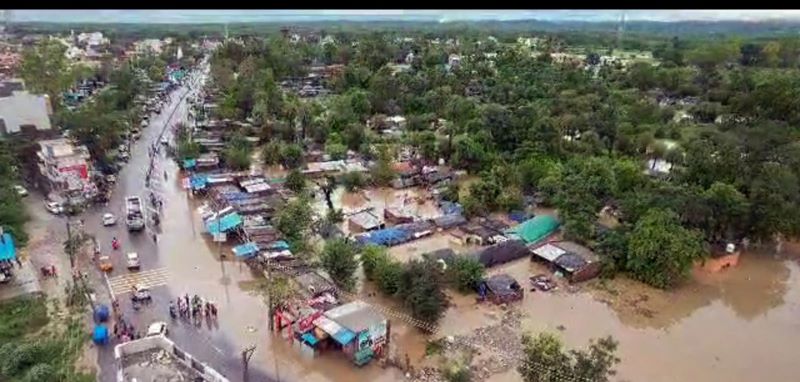 Punjab is once again reeling under the fury of heavy floods, leaving thousands of families displaced and their lives in turmoil. Entire villages are submerged, homes have been destroyed, and large swathes of farmland are lying under water. For the flood victims, survival has become a daily struggle—not just for themselves, but also for their livestock, which are an inseparable part of rural life. The absence of adequate food, both for people and animals, has deepened the misery of those trapped in flood-hit areas.
Punjab is once again reeling under the fury of heavy floods, leaving thousands of families displaced and their lives in turmoil. Entire villages are submerged, homes have been destroyed, and large swathes of farmland are lying under water. For the flood victims, survival has become a daily struggle—not just for themselves, but also for their livestock, which are an inseparable part of rural life. The absence of adequate food, both for people and animals, has deepened the misery of those trapped in flood-hit areas.
In these dark times, several social and religious organisations have emerged as a ray of hope. Day and night, their volunteers are on the ground—rescuing stranded families, providing shelter, and serving cooked meals to ensure survival. Their selfless service is a lifeline for thousands who have lost everything to the floods. “If these volunteers had not come, we would have died of hunger by now,” said Jaswinder Kaur, a flood victim from a village near Sangrur, sitting on the rooftop of a partially submerged house. “They gave food not only for us but also fodder for our cattle. For us, that means survival.”
From gurudwaras to local NGOs, from youth clubs to farmer organisations, countless groups are working quietly but effectively. Community kitchens have been set up, boats are being arranged to rescue families marooned in water, and relief camps are providing clothes and medicines. These initiatives reflect Punjab’s age-old tradition of seva (selfless service). A volunteer from a religious organisation said, “We don’t ask people who they are, we just serve. Flood doesn’t see religion or caste, and neither should humanity.”
Unfortunately, the flood-hit regions are also witnessing a different and highly regrettable trend. Many agencies and representatives are visiting these areas not with the intention of helping, but merely for publicity. Instead of bringing relief, they engage in photo sessions and media coverage, turning human suffering into a backdrop for their own image-building. Cameras flash as officials pose with flood-hit villagers, and once the pictures are taken, they vanish, leaving people just as helpless as before.
“We are tired of leaders coming here only to click photos,” complained Harbhajan Singh, a farmer who lost his entire crop in the floodwaters. “They stand with us for two minutes, get pictures for social media, and then leave. Not even a single bag of atta or fodder for our cattle is given. Is this called help?” Such insensitivity not only demoralises the victims but also undermines the genuine efforts being made by those working tirelessly for relief.
This misuse of tragedy for self-promotion must be discouraged. What the people of Punjab need today is not empty promises or staged sympathy, but real action. Every bag of flour, every packet of fodder, and every boat used for rescue carries more value than a hundred photo-ops. Those who are serving selflessly, without the need for cameras and applause, deserve our appreciation and support.
Punjab’s strength has always been its collective spirit. Time and again, its people have come together in moments of crisis, whether natural disasters or social challenges. Today, that spirit is being tested once again. To honour the resilience of flood victims and the sacrifices of volunteers, society must stand firmly against those who exploit pain for publicity. Only then will the true meaning of seva—service from the heart—shine through this calamity.
Moving forward, it is crucial to adopt a more organised and transparent approach to disaster management. The government should work hand-in-hand with grassroots organisations that already have the trust of local communities. Relief materials must be distributed in a fair and accountable manner, and special provisions should be made for the needs of farmers and their livestock, as both are the backbone of Punjab’s economy. Establishing coordination committees, involving panchayats, NGOs, and administration together, can ensure that aid reaches the right hands without delay. By strengthening collaboration and discouraging shallow publicity stunts, Punjab can turn this crisis into a lesson in unity, resilience, and true humanity.